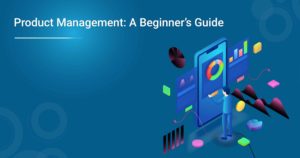A successful Go-To-Market strategy (GTM) is critical for Product Managers. Without a well-thought-out GTM Strategy, products can flounder in the market and never really take off.
In this blog, you will learn a step-by-step process to create a Go-To-Market strategy framework. We will provide you with examples to make your product successful in the market!
Go To Market Strategy: An Overview
A Go-To-Market strategy is a framework that product managers use to determine how they will bring a new product to market. A Go-To-Market strategy aims to ensure that the product is successful in the market by creating awareness, generating demand, and driving sales. It is more like a marketing plan to get your product acquainted with the target audience.
There are three key core components of a thriving Go-To-Market strategy:
- Segmentation: It divides the market into various clusters based on demographics, behaviour, and needs.
- Targeting: Select the segments that you want to focus on.
- Positioning: Creating a unique selling proposition for your product in each target segment.
There are also four key elements to consider when creating a Go-To-Market strategy:
- Value proposition: What value does your product extend to the customer?
- Distribution Channels: How will you reach your target market?
- Customer acquisition: How will you attract customers to your product?
- Sales and marketing: How will you generate demand for your product?
When Is The Right Time To Formulate a Go-To-Market strategy?
The answer to this question is not always straightforward as it depends on factors such as:
- The product life cycle stage
- The competitive landscape
- The size of the target market
However, there are certain key moments when a Go-To-Market strategy can be particularly helpful when:
- launching a new product
- bringing an existing product to a new market
- re-positioning a product in the market.
In each case, a well-thought-out Go-To-Market strategy can mean the difference between success and failure.
How To Prepare Before Building A Go-To-Market Strategy?
You need to do a few key things before you can start building your Go To Market strategy.
Deep understanding of the target market:
- Who are your target audience/customers?
- What are their needs that your product can address?
- What are their buying habits?
You can’t build an effective Go-To-Market strategy if you don’t know who you’re marketing to.
Get a Clear understanding of your product:
- What are its key features and benefits?
- What differentiates it from other products available in the market?
Again, you can’t build an effective Go-To-Market strategy if you don’t know what it is you’re selling.
Set some realistic goals:
- What goals do you need to accomplish with Go To Market Strategy?
- Are you looking to increase brand awareness? Drive more traffic to your website? Increase sales?
It is important to realize goals and objectives before you start developing your strategy.
Once you’ve done all of that, you’re ready to start building your Go-To-Market strategy framework.
How to Create a Go-To-Market Strategy?
As a product manager, you are liable for ensuring that your product is successful in the market. A go-to-market strategy is a critical part of this process.
A GTM strategy defines how you position, price, promote, and sell your product. Manu factors must be considered when creating a GTM strategy. Let’s take a look at the step-by-step approach to formulating a potent GTM strategy.

Step 1: Define Your Target Market
Defining the target market is the first step in creating a Go-To-Market strategy. Who are you selling your product to? What needs does your product address? What is the demographic update of your target market? Knowing the target audience will help you create a strategy that is tailored to them. The best way to identify your target market is to create a buyer persona. Specify their needs and demands to understand how to reach better and serve them.
Step 2: Research Your Competition
The second step is to research your competition. Who are your main competitors? What are their strengths and weaknesses? How are they positioning and selling their product? Knowing your competition will help create a unique product value proposition. It will also help you identify areas where you can improve your product.
Step 3: Identify The Problem That Your Product Solves
The third step is to identify the problem that your product solves. What need does your product address? How does it solve that need better than your competition? It is essential to be clear about the problem that your product solves. It will help in creating a message that resonates with your target market.
To identify the core problem, you must work on the pain points and product value proposition. Once you determine the problem, you can work on addressing it through your product.
Step 4: Create Your Messaging
This includes your tagline, elevator pitch, and value proposition. Your messaging should be clear, concise, and focused on the problem that your product solves. It should be tailored to your target market. The messaging is your product’s story. It should be compelling and make people want to buy your product.
It should communicate the benefits of your product and why it is better than your competition. Your messaging will be used in all your marketing materials, so it is essential to get it right.
You can use the following resources to help you create strong messaging for your product:
- The Positioning Statement Generator
- The Value Proposition Canvas
- The Lean Branding Workbook
Also Read: Product Management Frameworks Every PM Must Know
Step 5: Create Your Positioning Statement
The positioning statement entails a short sentence that defines what your product is and who it’s for. It should be clear and concise, especially focused on the problem that your product solves. Here’s an example: “For busy parents who want to spend more time with their kids, our app allows you to control your child’s screen time remotely.”
Step 6: Decide on Your Pricing Strategy
The pricing of your product is typically dependent on several factors, such as the perceived value of your product, the cost of goods, and the price of your competition. You must decide on a pricing strategy that meets your business goals. There are a few common pricing strategies:
- Premium pricing: This is when you charge a high price for your product because it is perceived as high value.
- Penetration pricing: This is when you set a low price for your product to penetrate the market quickly.
- Value-based pricing: This is when you quote a price based on your product’s perceived value.
Step 7: Set Up A Buyer’s Journey
The buyer’s journey is the process that your potential customers go through when they are considering a purchase. It includes three stages: awareness, consideration, and decision.
- Awareness: This is when the customer is aware of their need or problem.
- Consideration: This is when the customer starts researching solutions to their problem.
- Decision: This is when the customer decides which product to purchase.
Your Go-To-Market strategy should take your potential customers through each stage of the buyer’s journey. You should create content that helps them become aware of their need, consider your product as a solution, and decide to purchase your product.
The content should filter your audience into three funnel stages: top of the funnel (TOFU), middle of the funnel (MOFU), and bottom of the funnel (BOFU).
- Top-of-the-funnel content is designed to generate awareness and interest. It should be educational and informative. Examples include blog posts, eBooks, infographics, etc.
- Middle-of-the-funnel content is designed to generate consideration and interest. It should be more focused on your product and how it solves the customer’s problem. Examples include webinars, case studies, demos, etc.
- Bottom-of-the-funnel content is designed to generate decisions and purchases. It should be very focused on your product and include calls to action. Examples include free trials, coupons, and discounts.
Step 8: Define Your Channels
Defining channels is important to present your products to the right audience. A channel is a platform or method that you use to reach your target market. There are many different types of channels, such as online (e.g., website, blog, social media), offline (e.g., print, TV, radio), and direct (e.g., emails, phone calls).
Your channels will be based on your target market and where they are in the buyer’s journey. For example, the target market of small businesses will need online channels such as Google AdWords or LinkedIn Ads. In contrast, the target market of stay-at-home moms will require offline channels such as TV or radio ads.
Once you have defined your channels, you need to create a channel plan. This plan should include the following:
- Your goals for each channel
- The target market for each channel
- The content that you will use for each channel
- The call-to-action for each piece of content
- The budget for each channel
Step 9: Formulate A Sales Plan
The Go-To-Market strategy is incomplete without formulating a sales plan. Some of the potent sales strategies are:
- Self-Service Model: In this model, the customers can buy your product without interacting with the sales team. The customer goes through the entire buyer’s journey on their own and decides to purchase your product.
- Inbound Sales Model: In this model, the sales team uses content and other marketing initiatives to attract potential customers to their website. Once they are on the website, the sales team uses lead nurturing tactics to convert them into customers.
- Outbound Sales Model: In this model, the sales team proactively reaches out to potential customers through channels such as cold-calling, emailing, or trade shows.
The type of sales plan that you use will be based on your product, target market, and resources.
Also Read: 11 Crucial Product Management Metrics and KPIs
Step 10: Create Your Launch Plan
Now it’s time to create your launch plan. This plan should include all of the details of your product launch, such as the date, channels, budget, and content. You should also create a timeline of your launch activities. This will help you ensure that everything is on track and that you are hitting your milestones.
Step 11: Measure The Metrics
The final step in your Go-To-Market strategy is to measure your results. You should measure the following metrics:
- Website Traffic
- Leads generated
- Conversion rate
- Revenue generated
The progress of your product should be tracked against your goals. This will help you see what is working and what is not.
Creating a GTM strategy can seem daunting, but it doesn’t have to be. By following the steps, you can create a successful GTM strategy for your business and emerge as a proficient product manager.
Want to shine as a product manager by creating a stellar GTM strategy? Check our Advanced Executive Certificate in Product Management, which gives you a bird’s eye view of product management.
Benefits of Go-To-Market Strategy
A go-to-market strategy is essential if you’re looking to grow your business. By clearly defining your target market and creating a plan for reaching them, you can ensure that your marketing and sales efforts are focused and effective. A good go-to-market strategy can also help you better understand your customers and what they need from your product or service.
There are many benefits of having a go-to-market strategy in place. Perhaps the most important thing is that it can help you focus your limited resources on the most promising opportunities. With a well-defined target market and plan in place, you can avoid wasting time and money on activities that don’t contribute to your bottom line.
A go-to-market strategy can also help you to refine your messaging and positioning. By taking the time to comprehend the target market’s needs, you can develop messaging that resonates with them and positions your product or service as the best solution to their problem. This will make it easier to close sales and drive growth.
Finally, a go-to-market strategy can give you a competitive edge. By carefully planning your approach to the market, you can develop strategies that give you an advantage over your rivals. It could involve targeting underserved market segments, developing unique selling points, or finding other ways to stand out.
Reasons Why You Need An Effective Go-To-Market Strategy

Launching A New Product
The go-to-market (GTM) strategy is key to launching a new product. The GTM strategy defines how the product will be positioned in the market, how it will be priced, and what channels will be used to reach target customers.
The success of a new product launch depends heavily on the effectiveness of the GTM strategy. A well-executed GTM plan can help to generate buzz and excitement for a new product, build up anticipation among potential customers, and ensure that the product is available in the right channels at the right time.
On the other hand, a poorly executed GTM strategy can result in lacklustre sales and customer adoption. In some cases, a bad GTM strategy can even damage a company’s reputation if an unsuccessful launch turns customers off.
Identifying New Opportunities To Offer Better Products
A go-to-market strategy is critical for any business, but it’s essential for businesses that offer products. That’s because a well-executed go-to-market strategy can help identify opportunities to offer better products.
There are several factors to consider when developing a go-to-market strategy, but some of the most important include:
- Understanding your target market: It’s essential to clearly understand who your target market is and what they’re looking for in a product. It will help you determine what product type they would be interested in and how to best reach them.
- Knowing your competition: A thorough understanding of your competition is also essential. It includes knowing what they’re offering, their pricing, and their distribution channels. This information will help you develop a differentiated product offering and effectively position yourself in the market.
- Developing an effective marketing plan: Once you understand your target market and competition, you can begin developing an effective marketing plan. This should include messaging, branding, and lead-generation tactics to reach your target market and help convert them into customers or clients.
- Creating a sales strategy: In addition to marketing, you’ll also need to develop a sales strategy. This should include elements like pricing, product packaging, and distribution. Creating a process for tracking sales and measuring success is also important.
- Testing and refining: Finally, testing and refining your go-to-market strategy on an ongoing basis is essential. This includes making changes based on feedback from customers, sales data, and market trends. By continually testing and refining your GTM strategy, you can ensure that you’re always offering the best possible product to your target market.
Developing Competent Product Positioning
The go-to-marketstrategy is critical in developing product positioning. The go-to-market strategy defines how a company will reach its target market and sell its products or services. It includes decisions about the route to market (e.g., direct vs. indirect), channel mix (e.g., online vs. offline), sales model (e.g., inside vs. outside sales), pricing, and marketing mix (e.g., promotion, education, events).
The go-to-market strategy should be closely aligned with the overall business strategy and objectives. For example, if the business aims to grow market share in a specific geographic region, the go-to-market strategy should focus on expanding distribution channels in that region. If the objective is to increase revenue from existing customers, the go-to-market strategy should focus on upselling and cross-selling initiatives.
Product positioning is a key element of the go-to-market strategy. Positioning refers to how a product or service is positioned relative to market competitors. A well-defined position helps buyers understand what makes your offering unique and why they should choose it over alternatives.
Factors involved in better product positioning with go-to-market strategy include:
- Target market: Who is the target market for the product or service? What needs does this market have that your product or service can address?
- Competitors: Who are the key competitors in the marketplace? What positioning do they have? How does your product/service compare to theirs?
- Unique value proposition: What is the unique value proposition of your product or service? What makes it better than alternatives? Why should buyers choose it over other options?
- Brand: What is the brand of your product or service? What does it stand for? How does it differ from competitor brands?
- Pricing: How is your product or service priced relative to competitors? Is it a premium offering or a value offering? What pricing strategy will you use to support your positioning?
Determining The Right Pricing For Your Product Or Service Offering
No matter your business type, pricing is always a critical part of the go-to-market strategy. The proper pricing can help you attract customers, generate revenue, and achieve profitability. But how do you determine the right price for your product or service?
There are several factors to consider when setting the price, but some of the most important include the following:

- Cost of goods sold: The cost of goods sold (COGS) is the direct costs linked with manufacturing or acquiring the product or service. This includes materials, labour, and overhead costs. The COGS should be considered when setting the price so that the company can generate a profit.
- Value to the customer: The price should also reflect the value the customer will receive from the product or service. For example, a product that provides a lot of value to the customer (e.g., a life-saving medication) should be priced differently than a product that provides little value (e.g., a coffee mug).
- Competitive landscape: It’s also important to consider the prices of similar products or services in the marketplace. It will help you determine where your product or service fits in and how to price it accordingly.
- Pricing objectives: Finally, it’s essential to consider what pricing objectives you want to achieve. For example, do you want to maximize revenue? Minimize costs? Achieve profitability? Once you know your objectives, you can develop a pricing strategy that aligns with them.
Selecting The Right Distribution Channels For Your Product Or Service
Another essential element of the go-to-market strategy is choosing the right distribution channels for your product or service. Distribution channels are how a product or service is made available to customers. They can include retailers, wholesalers, distributors, online marketplaces, and direct sales.
The right distribution channel will depend onseveralf factors, including the type of product or service being offered, the target market, and the company’s overall business objectives. For example, a company selling high-end products may want to focus on direct sales to provide a more personalized experience and build customer relationships. A company that sells commodities may want to focus on selling through retail outlets so that it can reach a large number of potential customers.
Also Read: What is a Product Line: Pricing, Strategies & Fundamentals
Once you’ve selected the right distribution channels for your product or service, you need to develop an effective plan for reaching and selling to customers through those channels. This should include developing relationships with key channel partners, creating marketing and sales collateral, and training channel partners on your product or service.
Building Awareness For Your Brand In The Marketplace
Believe it or not, a go-to-market strategy helps build brand awareness in the marketplace.
An important part of the go-to-market strategy is branding. Branding helps to create awareness for your company and its products or services in the marketplace. It sets you apart from your competition and helps customers remember you when they’re ready to make a purchase.
There are many elements to consider when developing a branding strategy, but some of the most important include the following:
- Logo and identity: A strong logo and identity are essential for any company. They should be simple, memorable, and recognizable.
- Messaging: Your messaging should be clear, concise, and consistent across all channels. It should communicate what your company does and why customers should care about it.
- Positioning: Your positioning should be unique and differentiated from your competition. It should explain what your company does and why it’s the best option for potential customers.
- Voice and tone: Your voice and tone should be consistent across all communications. They should reflect your company’s personality and be appropriate for your target audience.
- Visuals: Your visuals should be eye-catching and memorable. They should be used consistently across all channels and reflect your brand identity.
Go-To-Market Strategy Examples
It is the responsibility of a product manager to make the product successful in the market and is lauded by the target audience. Part of this responsibility includes creating and executing a Go-To-Market strategy. Check out some examples of GTM strategy:
Company A’s product is a new software that helps businesses manage their social media accounts. The company’s GTM strategy includes creating a landing page to drive traffic, running ads targeting small businesses, and partnering with other software companies to offer their customers discounts on the new product.
Company B sells an online course teaching people how to start their own businesses. The company’s GTM strategy includes creating a free mini-course to drive traffic, running ads targeting people interested in entrepreneurship, and partnering with other business resources to offer their customers discounts on the full course.
Company C sells a line of natural health supplements. The company’s Go-To-Market strategy includes creating informative blog posts and videos to drive traffic, running ads targeting people interested in natural health, and partnering with other health resources to offer their customers discounts on the products.
These examples of GTM strategy clearly indicate that each business/product requires a distinctive Go-To-Market strategy. Always tailor your approach to fit your specific product and target market!
Do you also want to formulate a GTM strategy and ace other aspects of product management? Take a look at our Advanced Executive Certificate in Product Management to get an overview of product management, including formulating Go-To-Market strategies.
More Information:
Product Management Frameworks Every PM Must Know
Project Planning: Importance, Tools and Fundamentals






_1668670867.jpg)





















